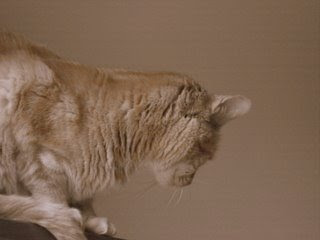Cataracts are a common condition affecting people, dogs, and cats. It is a consequence of aging, as well as ultraviolet light exposure and also occurs as a side effect of certain diseases. The lens of the eye, situated behind the pupil, becomes cloudy, then milky-white. Generally, this results in some loss of visual acuity and, if the condition persists, could lead to blindness.
Some opacity of the of the animals' eye is apparent after about ten years of age and is normal. You will be able to see this in your older pet when the light strikes his eyes at a certain angle; this seldom causes vision problems. Cataracts, however, are another matter. They are more common in dogs than cats, probably because dogs spend more time outdoors. Eye injuries and infections, poor nutrition and diabetes are all contributing factors. Dr. Richard Pitcairn notes that dogs with hip dysplasia and chronic skin and ear problems are especially prone to developing cataracts. It makes sense that cats with such chronic health problems will also be prone to this disorder.
Although there is agreement that diabetes mellitus seems to lead to the formation of cataracts, the literature is silent on why this might be. Dr. Pitcairn notes that cataracts form even when the animal is on insulin treatment. Of course, administering insulin treats the most obvious symptoms of diabetes but does not cure or halt the disease. Inflammation, nerve damage and the hardening of blood vessels that occur with this disease could all account for the formation of cataracts. Capillaries, the smallest of blood vessels, are the first to be impacted. This type of vessel feeds blood to the eye. Without proper blood flow, the lens is affected.
Anti-oxidants are important to help slow the progression of cataracts. The increased water intake and urination that results from diabetes will flush many nutrients out of the body. Low-quality commercial pet foods won't supply what the animal needs in the first place. Therefore, it is important to supply these nutrients in supplement form. My sister-in-law recently expressed concern regarding the cataracts in her older Bichon Frise. She is currently giving him a quality supplement, which is an excellent idea.
What supplements need to be added to the diet? Anitra Frasier suggests the amino acids histidine and phenylalanine, as well as the B vitamins (especially B-2). Vitamin C is cited quite often, and is safe to give since it is water soluble. Vitamins A and E are also important, but are fat-soluble and so should be supplemented with a bit more caution.
Would you like to share your home with a disadvantaged child this summer? Check out the Fresh Air Fun Host Program for more details.
Chat later!
Wednesday, March 31, 2010 7:05 AM
Cataracts in Cats
Subscribe to:
Post Comments (RSS)



1 comments:
Hi Amanda. Thanks for the information. A new supply of the supplements arrived today!
Post a Comment